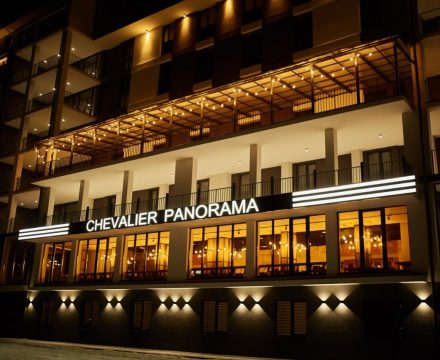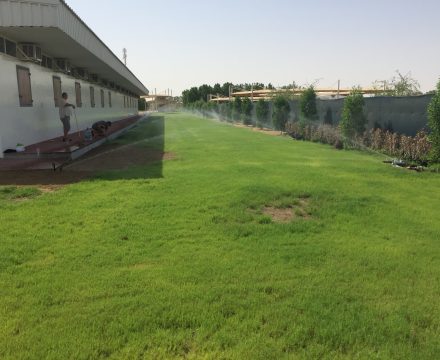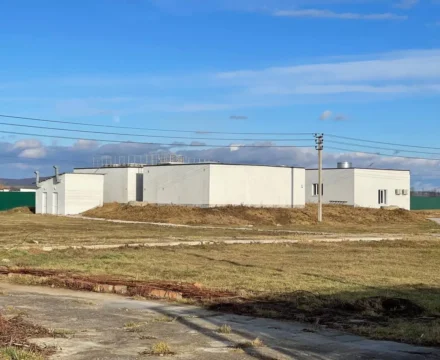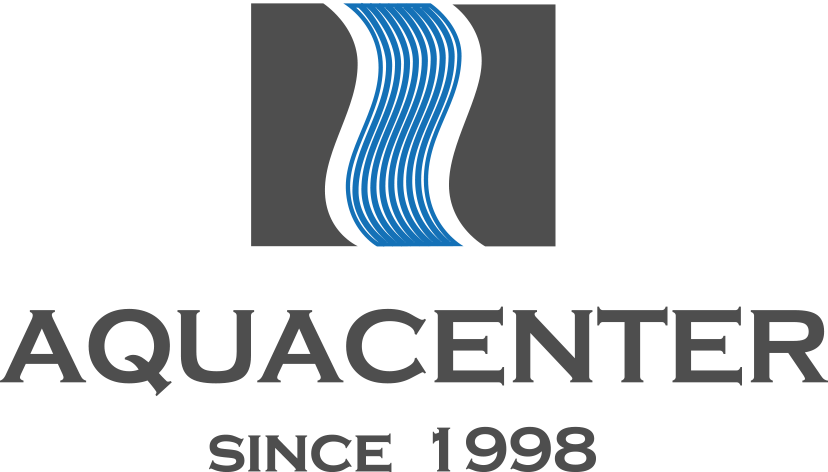Small wastewater treatment plants
Distinctive features. Design and operation issues.
PLATON technology.
Purification of small volumes of wastewater is becoming increasingly important. Today, the construction of relatively small (compared to the scale of development in the 70s of the last century) housing complexes, cottage towns, restaurant and hotel complexes, etc. is quite common. These facilities are usually located outside the urban development and, as a result, are removed from the existing city sewerage networks at a distance sufficient to form the technical specifications for the construction of local treatment facilities.
This article will discuss Small wastewater treatment plants with a capacity of 10 to 1000 m3/day.
In Europe, Small wastewater treatment plants are quite widespread, while the treatment rates for small volumes of wastewater are significantly lower than in Ukraine. It is enough to look at the comparative table of permissible concentrations of the main pollutants contained in purified wastewater.
| Indicator | Permissible concentrations of the main pollutants contained in purified wastewater. | |
| EEC requirements* | Ukrainian requirements for water bodies for cultural and domestic purposes | |
| Biological oxygen consumption (BOC5), mg О2/l | 30 – 60 | 15** |
| Chemical oxygen consumption (COC),mg О2/l | 125 | 80** |
| Suspended substances, mg/l | 35 – 60 | 15** |
| Nitrogen of ammonium salts, mg/l | as a rule, not standardized (in reality 8 – 12 mg/l) | 2*** |
| Nitrates, mg/l | as a rule, not standardized (in reality 60 – 80 mg/l) | 45*** |
| Phosphates, mg/l | as a rule, not standardized (in reality 12 – 16 mg/l) | 3,5*** |
* The data provided in column 2 are valid for treatment facilities receiving wastewater from facilities with an equivalent population of 2,000 to 10,000 people, as well as for those cases where treated wastewater is discharged into water bodies not subject to eutrophication.
** Resolution of the Cabinet of Ministers of Ukraine dated March 25, 1999 No. 465 “On the approval of the rules for the protection of surface waters from pollution by backwaters”, paragraph 19
*** The values are approximate, since the standardization of the MAC of these indicators is carried out by local authorities authorized to issue permits for special water use. (Resolution of the Cabinet of Ministers of Ukraine dated March 25, 1999 No. 465 paragraph 19)
As can be seen from the table, the requirements for wastewater treatment in Ukraine have remained high since the Soviet era, regardless of the volume of wastewater being treated. It should be added that the cost of treatment facilities is quadratically dependent on the treatment effect. In other words, the price of a MWTP with an 85% treatment effect will be 2-2.5 times less than a MWTP with a 95% effect. In today’s conditions, this state of affairs rather forces us to look for “other ways” of wastewater disposal. The situation with existing treatment facilities is no less depressing. There are no official statistics on the discharge of untreated wastewater from small settlements. Having experience of numerous trips to small towns and villages in Ukraine, I can safely assume that, according to the most favorable estimate, more than 80% of wastewater is discharged either insufficiently treated or without any treatment at all. By “insufficiently treated wastewater” we should understand that wastewater passes through treatment facilities in transit. At best, only settling tanks work. It should also be noted that the smaller the settlement, the greater the likelihood of untreated wastewater discharge.
This can be partly explained by the fact that the last 25 years can be called a period of destruction of the public utility infrastructure. The worst luck was suffered by sewage treatment plants. If it is very difficult to live without water and electricity, then without treatment facilities, if you frown a little, it is possible. If only the sewer collector was longer and worked properly. Everything that was once created is in a state of emergency and continues to deteriorate.
There
There are many reasons for this situation, including the following:
- 🔹 In pursuit of versatility and speed, so characteristic of the socialist planned economy, treatment facilities were often built poorly and from poor-quality materials (ferrous metal, “low-cement” concrete, fragile asbestos-cement or cast iron pipes);</>
- 🔹 The smaller the settlement, the higher the specific cost of cleaning 1 m3 of wastewater.
- 🔹 Due to the constant restraint on the growth of utility tariffs and the meagerness of the local budget of small towns and villages, it is very difficult and expensive to operate such a complex facility as treatment facilities built according to a standard design from the 70s.
As a result, the following picture is observed:
Disconnected air blowers and sludge pumps (often without electric motors, which have found other uses), crumbling concrete of settling tanks and aeration tanks, rotten sludge pipes and aeration systems, unpleasant odor (since the facilities have turned into a chain of ordinary septic tanks).
Services have been stopped altogether, personnel has been reduced. Sometimes you can meet a duty “operator”-guard. “Understanding the situation”, the controlling services simply turn a blind eye. If yesterday major repairs and reconstruction of treatment facilities were considered an urgent problem, today, in most cases, it will be cheaper to build new ones.
The technology of cleaning small volumes of wastewater in the Soviet Union developed poorly, since scientific and design institutes worked mainly on large treatment facilities, small treatment facilities were rather a rarity. Until recently, the main solution for the disposal of small volumes of wastewater was a septic tank with drainage. Geometric reduction of large treatment facilities turned out to be an unacceptable solution. A fundamentally new approach is needed to create MTPs that provide the required high purification rates. Today, since demand creates supply, the market offers a rich palette of technological and design solutions for wastewater treatment and disposal. The variety of quality of the resulting product (treated wastewater) is equally rich.
When choosing a treatment facility, the customer takes into account the following factors:
- 🔹 price;
- 🔹 warranty period;
- 🔹 cost of maintenance;
- 🔹 operating costs (electricity, wages, etc.).
In this case, the customer must understand that the quality and stability of wastewater treatment indicators are of primary importance, and this cannot be achieved in primitive MWTPs.
The main problems and distinctive features of small-volume wastewater treatment:
- Fresh concentrated wastewater is supplied to small treatment facilities, in which the amount of organic matter, nitrogen and phosphorus does not correspond to the optimal ratio for the biological process – 100:5:1 (organic matter: nitrogen: phosphorus);
- Possibility of a salvo inflow of wastewater. Sometimes up to 25% of the daily inflow can enter the facilities in a few minutes. The plant must accept a salvo discharge without carrying out activated sludge with purified wastewater;
- Possibility of a long absence of wastewater inflow to the plant;
- Possibility of a salvo discharge of a large amount of synthetic surfactants (SSAS) formed during washing;
- Possibility of a salvo discharge to the plant of highly concentrated wastewater, for example from the kitchen, while the BOD of the incoming wastewater to the MTP can reach 2000 mg/l (5 times higher than the norm and even more);
- Minimal involvement of service personnel. The cleaning process must be carried out automatically.
This is not a complete list of the problematic issues that need to be addressed when creating a technology for cleaning small volumes of wastewater. Large treatment facilities do not have such problems, since they receive a more or less uniform flow, averaged both by the flow rate of incoming wastewater and by the concentrations of contaminants contained in it. Averaging here occurs in the sewer networks during the movement of wastewater to the treatment facilities. Also, municipal wastewater is diluted with practically clean storm water and industrial wastewater, in which, as a rule, unlike domestic wastewater, nitrogen and phosphorus are present in small concentrations.
No municipal treatment facility is able to cope with such a concentration of surfactants, fats and disinfectant solutions that come with wastewater to small treatment facilities, for example, from a cottage when washing clothes, cooking or washing plumbing and floors.
The above complex conditions of wastewater treatment at small treatment facilities make it unacceptable to design them by analogy with large ones, especially by geometrically reducing them.
Taking into account the above differences between MWTP and municipal treatment facilities, and above all, the absence of constantly present personnel, small facilities, as a rule, are devoid of bulky mechanical cleaning units and sand traps. Often, mechanical cleaning grates are replaced by mesh containers, and sand traps (due to the insignificant volumes of incoming sand) are completely absent. Many MWTPs do not have primary settling tanks, which simplifies operation, but increases the load on aeration tanks (which many forget about when calculating biological treatment units).
Traditional scheme for cleaning domestic wastewater.
For further understanding of the design features of MWTP, it is necessary to imagine the classical (traditional) technology of cleaning domestic wastewater. There are several (in fact, very few) technological schemes for cleaning domestic wastewater.
The most common are:
- Mechanical cleaning of solid waste on screens, rakes, etc.
- Removal of sand in sand traps.
- Clarification of wastewater by settling in primary settling tanks.
- Biological treatment in the presence of free-floating activated sludge and dissolved oxygen in aeration tanks.
- Separation of purified wastewater from activated sludge in secondary settling tanks.
- Disinfection with active chlorine with 30-minute contact in contact tanks.
Often, especially at low-capacity treatment facilities, gravel biofilters can be found instead of aeration tanks. Here, activated sludge is a biofilm placed on the surface of the gravel load. Such facilities, as a rule, are subject to irreversible pollution and already in the 2nd year of life, the cleaning efficiency decreases sharply up to the appearance of secondary pollution. Resuming the operation of such biofilters is a very labor-intensive undertaking. Major repairs of such facilities become economically inexpedient.
Biological treatment remains common to all facilities, both small and large. In most cases, aerobic treatment with activated sludge (in the presence of dissolved oxygen) is used to clean domestic wastewater. Facilities in which aerobic biological treatment is carried out are called aeration tanks. Recently, for more complete removal of nitrates and phosphates, biological treatment facilities have become widespread, which have both aerobic zones, where air is supplied, and anaerobic zones, where air is not supplied. It is more correct to call such facilities bioreactors. But in both aeration tanks and bioreactors, the main treatment agent is activated sludge.
Activated sludge is a biocenosis of clusters (colonies) of bacteria and protozoa that participate in wastewater treatment.
Biological treatment of wastewater is carried out in order to remove organic matter from it, including nitrogen and phosphorus compounds.
Biological treatment process.
The biological treatment method is based on the ability of activated sludge to use pollutants as its food under certain conditions. Many microorganisms that make up the activated sludge of the bioreactor, being in the waste liquid, absorb pollutants into the cell, where they undergo biochemical transformations under the influence of enzymes. Often, preliminary treatment of pollutants with enzymes is carried out outside the cell.
In this case, organic and some types of inorganic pollutants are used by the bacterial cell in two directions:
1. Biological oxidation in the presence of oxygen to harmless products (carbon dioxide and water):
Organic matter + O2 (in the presence of enzymes) ⇒ CO2 + H2O + Q
where Q is the released energy used by the cell to ensure its vital functions (movement, respiration, reproduction, etc.).
2. Synthesis of a new cell (reproduction):
Organic matter + N + P + Q (in the presence of enzymes) ⇒ NEW CELL
The intensity and depth of the processes depend on the qualitative composition of the activated sludge, the diversity of forms and types of microorganisms, their ability to adapt (adapt) to the specific composition of pollutants and the conditions of the process.
Process conditions.
- 🔹 compliance with maximum permissible concentrations of pollutants;
- 🔹 absence of substances toxic to microorganisms in the waste liquid;
- 🔹 sufficient amount of oxygen and intensity of aeration;
- 🔹 the temperature regime must be within certain limits;
- 🔹 the load on the sludge in terms of the amount of pollutants must be within certain limits (between the minimum and maximum permissible values);
- 🔹 the contact time of the sludge and the waste liquid must be no less than the calculated period;
- 🔹 the ratio of organic carbon, biogenic elements (nitrogen and phosphorus) and microelements (copper, iron, sulfur, etc.) must be within certain limits (between the minimum and maximum permissible values);
Activated sludge condition monitoring.
Microorganisms are an effective indicator for determining sludge quality. To carry out monitoring, a hydrobiological analysis of the water-sludge mixture is carried out using the microscopic method (studying the sludge biocenosis under a microscope). Structural features of the activated sludge biocenosis are determined, the organisms of which have the ability to respond (qualitative change and quantitative distribution of individual groups) to the composition and properties of the treated wastewater, as well as to life support conditions. The numerical predominance of a particular biocenosis component serves as an indicator of the stability and efficiency of the wastewater treatment process. This method allows you to determine deviations of microorganisms and changes in the species composition of the biocenosis from the normal state. Moreover, by the degree of such deviations, it is possible not only to determine the state of the biological treatment process and the reasons for its deviations from the norm, but also to predict the timing and prospects for changing its course.
Automation.
Automation of treatment is often considered redundant. Those who claim that automation of treatment processes at small treatment plants is not necessary, that automated installations are less reliable than simple installations, have a vague idea of biological wastewater treatment. In fact, the concept of reliability of small treatment systems refers to the stability of the ongoing biological treatment processes, which are a necessary condition for the effective operation of the treatment system and the required indicators of wastewater treatment. The system must stably maintain all parameters of the biological process within the required limits, automatically switching to the required operating mode at the right time. And yet, it must be simple and understandable enough for the operating personnel.
Some “cheap” and “reliable” MTPs on the Ukrainian market.
As a rule, the big “secret” of their technologies is made, as a rule, by companies producing the most primitive MTPs. They understand that by describing their technology in detail on the website and in brochures, many will understand that such a system will not work. Small treatment facilities with a volume not exceeding the daily inflow of wastewater operate as flow-through ones, which leads to the discharge of activated sludge from the settling tank when wastewater enters the plant in a salvo. The required speed of the ascending flow, for effective settling in the secondary settling tank, should be calculated in fractions of a millimeter per second. And in such installations, for example – with a salvo flow of wastewater in the amount of 0.1 m3/min (emptying the bath), to a plant with a capacity of 1.5 m3/day, the speed of the ascending flow in the secondary settling tank will be more than 10 mm/second, which will lead to the removal of active sludge from the plant with subsequent failure of the drainage system. It is by unauthorized emissions from the plant of excess active sludge with purified wastewater that such systems “solve the issue” of removing excess active sludge. After this, of course, it can be argued, ignoring the well-known laws of nature, that excess sludge is not formed in such installations, or that it is enough to remove it once a year. In such installations, with an increase in the amount of incoming wastewater, the time of its processing decreases, which naturally affects the cleaning effect. These are some of the many problems of such “cheap, simple and reliable” wastewater treatment systems. It can be added that such installations are not that cheap, and if you add to this the excess consumption of electricity during the period of absence of wastewater flow to the installation and clogging (clogged) drainage area, then this cheapness can be “golden”.
When considering the issue of the possibility of using this or that system from a legal point of view, the manufacturers of many MOS present a Sanitary and Epidemiological Conclusion. However, if you read it carefully, it turns out that this conclusion is given that the installation itself complies with sanitary standards, but not the water it treats. And this is naturally correct, since according to the current legislation, a permit for the operation of treatment facilities can be issued only after they are put into operation, and environmental authorities will analyze the operation of the treatment facilities, take samples of purified water, conduct the appropriate tests and issue a conclusion on the compliance of these treatment facilities with the required standards. Naturally, it is necessary to first obtain approval for the project from all relevant authorities. In reality, there is only one installation, but the conditions for its operation are different everywhere. This permit is not required if the owner will discharge the treated water into a drainage ditch on his site. A discharge permit is required only if the owner of the treatment plant decides to discharge wastewater into surface water bodies of various purposes or onto the terrain, within the boundaries of a populated area or in reaction zones. But in this case, it is necessary to obtain permission from other local authorities (administration), and most importantly, neighbors on the site.
 Lake water purification. Sports hotel “Chevalier Panorama”, BukovelGo to
Lake water purification. Sports hotel “Chevalier Panorama”, BukovelGo to Filtration of water from the river. “GasthauS” Hotel, BukovelGo to
Filtration of water from the river. “GasthauS” Hotel, BukovelGo to Water desalination. United Arab Emirates, DubaiGo to
Water desalination. United Arab Emirates, DubaiGo to Hotel wastewater treatment. Hotel “Carparosa Hotel & Restaurant”, BukovelGo to
Hotel wastewater treatment. Hotel “Carparosa Hotel & Restaurant”, BukovelGo to Filter station. Enterprise “UPG-Invest” TM “Syaivir” v. MamaevtsyGo to
Filter station. Enterprise “UPG-Invest” TM “Syaivir” v. MamaevtsyGo to





